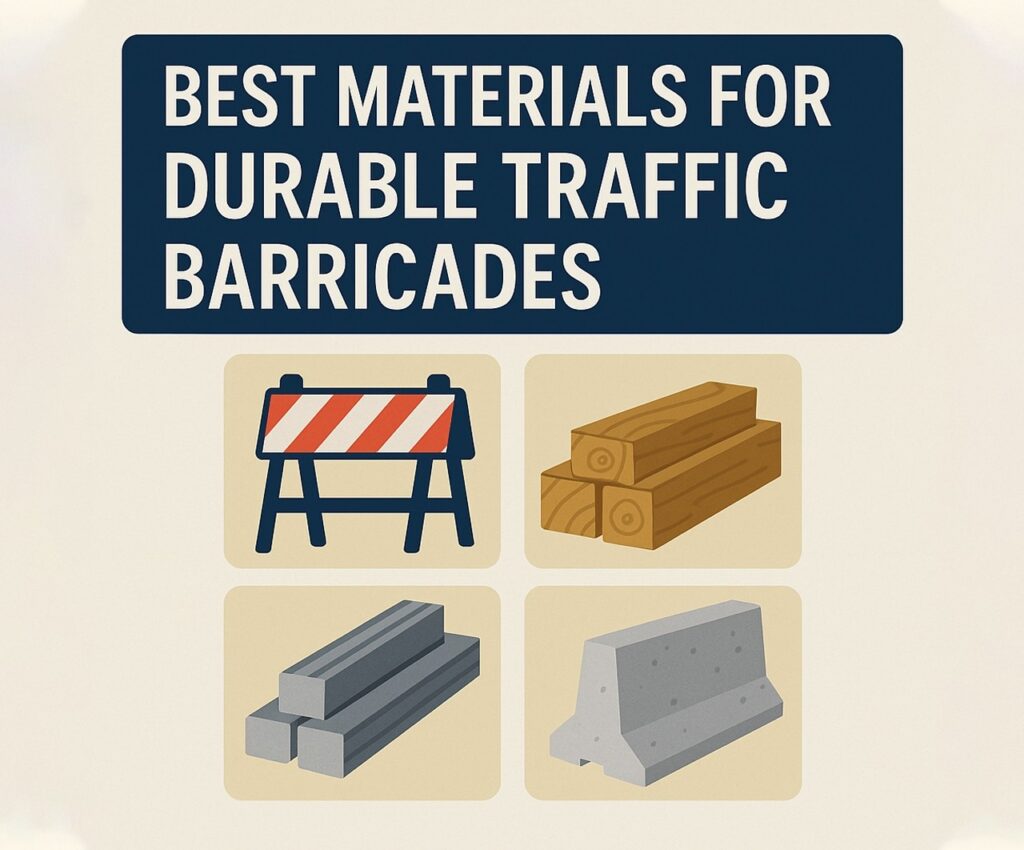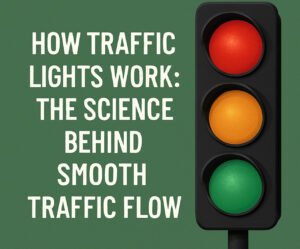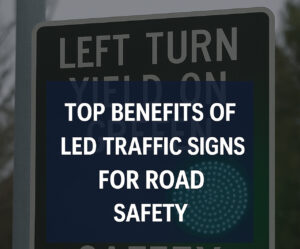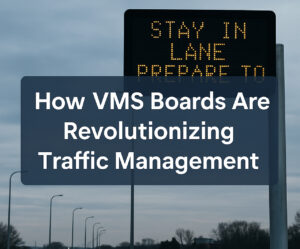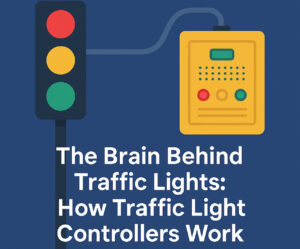When it comes to ensuring road safety and managing vehicle flow during construction, emergencies, or public events, few tools are as critical as traffic control barricades, especially type 3 traffic barricades. If you’ve ever searched online for the most reliable traffic barricades near me, you know that durability and performance vary depending on the material used. The right barricade can mean the difference between a smooth traffic operation and a hazardous situation. That’s why understanding the best materials for barricade construction is essential. Know more..
Why Material Matters in Traffic Barricades
Traffic barricades take a beating. They’re exposed to the elements year-round, often moved between job sites, and must stand up to both vehicular impact and human error. Materials that lack durability will cost more in the long run due to replacements, inefficiency, and safety concerns.
Whether you’re sourcing traffic barricades near me for a one-off event or a long-term road project, the materials you choose directly affect how well those barricades will perform under pressure. High-performance materials offer better resistance to weather, UV rays, and physical impact—all vital characteristics in the world of traffic control barricades.
Top Materials for Durable Traffic Barricades
1. High-Density Polyethylene (HDPE)
HDPE is one of the most popular materials used in modern traffic control barricades. This plastic is known for its toughness, flexibility, and resistance to impact and UV degradation.
Advantages:
- Lightweight and easy to transport
- UV-resistant for long outdoor life
- Won’t rust or corrode
- Can be filled with water or sand for added stability
HDPE is commonly used in type 3 traffic barricades due to its modular design and ability to withstand repeated use in different environments.
2. Steel and Metal Alloys
Steel is a classic choice for long-term or permanent barricade setups. While heavy and prone to rust if not properly treated, it offers exceptional strength and stability.
Advantages:
- Incredibly durable and impact-resistant
- Great for high-traffic or high-risk areas
- Can be anchored securely to the ground
Steel type 3 traffic barricades are often used in industrial zones and heavy-duty work areas where strength is non-negotiable. However, keep in mind that they require regular maintenance to prevent corrosion.
3. Composite Materials
Many modern traffic control barricades now feature composite materials that combine the benefits of plastic and metal. These materials are engineered for specific performance needs.
Advantages:
- Strong but lightweight
- Customizable features (reflectivity, color, etc.)
- Resistant to environmental damage
Composite traffic barricades near me may come at a slightly higher cost but offer superior performance and lower lifetime maintenance expenses.
4. PVC (Polyvinyl Chloride)
PVC is another plastic material often used in lighter traffic control barricades. It’s less durable than HDPE but works well for temporary applications.
Advantages:
- Budget-friendly
- Lightweight for quick setups
- Decent weather resistance
PVC type 3 traffic barricades are best suited for low-risk, short-term situations like parades or small road repairs.
5. Concrete
Though not as common for mobile applications, concrete barricades are essential in long-term safety installations. They are often used in high-risk zones like highways or sensitive areas near government buildings.
Advantages:
- Immovable and extremely strong
- Excellent crash resistance
- Long lifespan
You won’t find concrete traffic barricades near me on typical retail sites, but government and construction contracts often specify them for permanent installations.
Choosing the Right Material for Your Needs
Your ideal material depends on where and how your traffic control barricades will be used:
- Short-term events: PVC or lightweight HDPE
- Medium-term construction: HDPE or composite materials
- Long-term/high-risk zones: Steel or concrete
For versatility, HDPE is a top pick. If you’re prioritizing safety in high-impact zones, go with metal or concrete.
Customization and Compliance
Durable materials are only part of the equation. Your type 3 traffic barricades also need to meet federal and local regulations. For example, the Manual on Uniform Traffic Control Devices (MUTCD) sets standards for height, visibility, and reflectivity.
Look for traffic barricades near me that include:
- High-visibility reflective sheeting
- Modular construction for scalability
- Compatibility with signage
Durability is important, but compliance ensures safety and avoids legal trouble.
How Weather Affects Barricade Performance
Weather extremes can degrade barricade materials faster than normal use. Here’s how different materials hold up:
- HDPE: Performs well in rain, snow, and direct sun
- Steel: Strong but vulnerable to rust if untreated
- PVC: May become brittle in cold temperatures
- Concrete: Rock solid, but can crack under extreme freeze-thaw cycles
Choose materials suited for your region’s climate. If you’re constantly dealing with wind or precipitation, water-fillable HDPE barricades provide great stability without permanent anchoring.
Maintenance Tips to Extend Lifespan
Even the best traffic control barricades need occasional upkeep. Here’s how to extend their life:
- Store in dry areas when not in use
- Clean reflective panels to maintain visibility
- Check for cracks, rust, or UV damage
- Rotate stock to distribute wear evenly
If you’re buying traffic barricades near me, ask about warranty and maintenance support. Some suppliers offer repair services or bulk discounts for replacements.
Trends in Barricade Material Innovation
The future of type 3 traffic barricades is becoming smarter and more efficient:
- Recycled materials: More products are being made from recycled HDPE or composites
- Smart barricades: Integrated LEDs, sensors, and GPS for real-time monitoring
- Sustainable design: Biodegradable and environmentally friendly options are in development
As cities move toward smart infrastructure, expect traffic control barricades to become more interactive and connected, improving both safety and data collection.
Conclusion
When it comes to safety, there’s no room for compromise. The material of your traffic control barricades determines how well they’ll perform under stress, in harsh weather, and over time. Whether you’re searching for traffic barricades near me for a weekend event or installing type 3 traffic barricades on a major highway project, the right material makes all the difference.
From tough HDPE and durable steel to lightweight PVC and sturdy concrete, every material has its strengths. Understanding those helps you choose wisely and invest in road safety that lasts.

